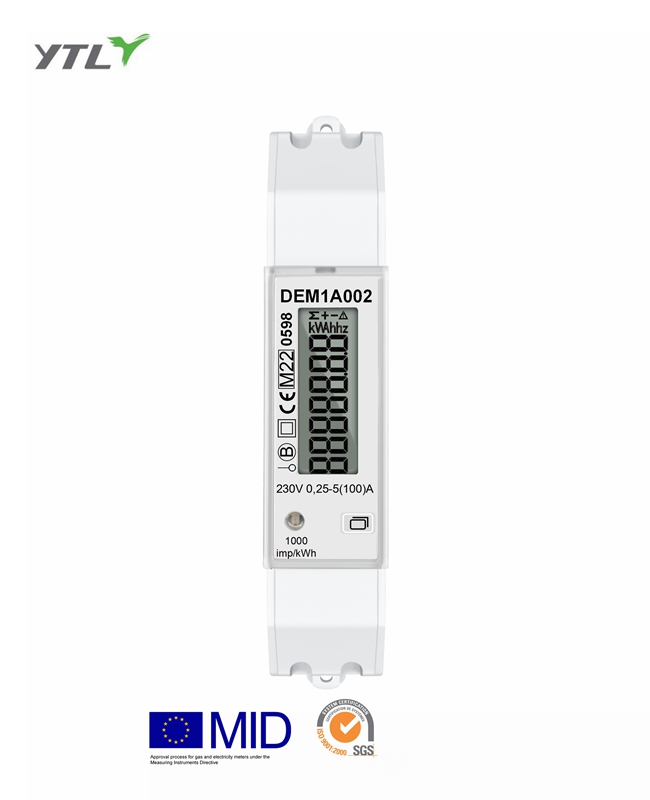YTL DEM1A Din-Rail Single Phase 1 model Multi-tariffs CE RoHS SO energy meter

YTL DEM1A Din-Rail Single Phase 1 Wire Two Tariff CE MID Approved Electric Meter.Electricity metering for homes, factories, equipment, car charging piles, photovoltaic power generation projects, etc.
This will enable the government to understand how charging patterns are likely to develop and help to inform the estimated uptake of EVs.Phase two of the consultation focuses on the longer term approach to smart charging. This includes the regulation of the EV batteries themselves. For example, they must comply with the IEC61851 standard for safety.The cost of charging an EV depends on a number of factors. For example, the size of the battery, the power source, the type of EV charger, and your location.When choosing an EV charger, it is important to consider the level of speed that the charger can deliver. It is also a good idea to choose an EV charging station that offers a touchscreen or Bluetooth connectivity. You can then adjust the charging time accordingly.Con Ed is an investor-owned utility that provides commodity--electricity--to New York City.
In April, the New York Public Service Commission (NYPSC) approved a plan to raise electricity prices, which are 47% higher than the national average before the increase.If you have an electric vehicle, you have the option of using a separate meter for your EV charging. This will give you a better sense of the actual costs of charging your vehicle.Another option is a time-of-use rate. These are rates designed for residents who charge their EVs during periods of lower demand. By converting your account to a time-based rate, you will receive a discount on your electricity bill.There are many different electric vehicles available on the market today, and each has different charging rates. The EV Time of Use rate is a time based rate designed for EV charging.
This rate allows EV owners to save money on their electric bill by charging their vehicle during off-peak hours.A recent study conducted by Enel X, a global power company, found that consumers are very responsive to time varying rates. They can help lower electricity consumption while reducing emissions.Customers can opt in to this rate plan by installing an eligible charger. Once enrolled, the electricity meter will carry a nominal monthly charge. To find out more about this type of rate, visit your utility's website.A time of use rate is not an exact science, and the actual savings vary by location, vehicle, and usage. For example, a nine-to-fiver who works Monday through Friday and charges their EV overnight could save up to $120 per year.

 English
English 中文简体
中文简体
-1.jpg?imageView2/2/w/500/h/500/format/png/q/100)





.jpg?imageView2/2/w/500/h/500/format/png/q/100)
.png?imageView2/2/w/500/h/500/format/png/q/100)






